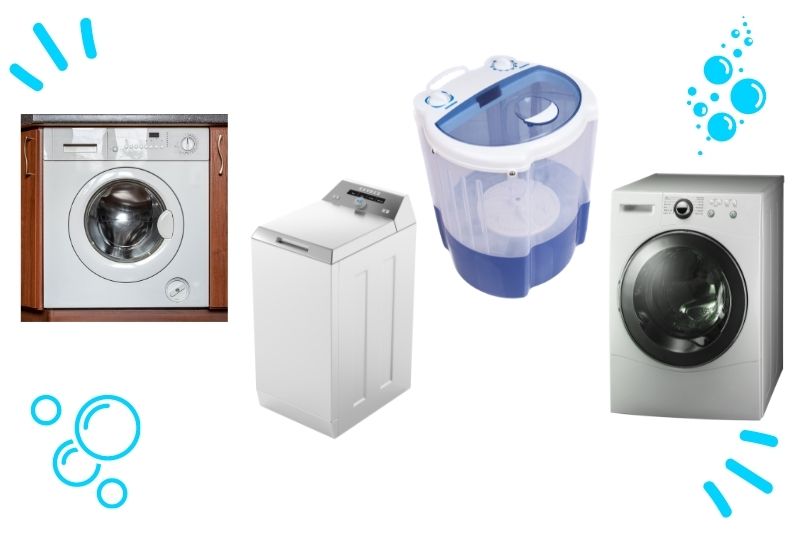An indispensable household assistant, the washing machine is rightfully considered the most important helper in the house. It saves a tremendous amount of time by washing, rinsing, wringing, and sometimes even drying clothes and linen. Moreover, modern machines are designed to be energy and water efficient. Let’s take a closer look at how automatic washing machines differ.
Types of washing machines – what is important to pay attention to
Loading type
There are two main types of washing machines: front-loading and top-loading. The main characteristics of devices of each type are as follows:
Front-loading
• Easily built-in and perfectly placed in kitchen furniture or under the sink. • Require more space in the apartment (compared to top-loading models), and you need to leave a reserve of space for opening the hatch. • Offer more convenience with models in which opening the hatch is possible up to 180 °.
Top-loading
• Can be located anywhere in the apartment (no space is needed to open the hatch). • Allow you to add or remove laundry during the washing cycle. • Have controls (panel, switches, buttons) located on top, making it difficult for small children to operate the machine.
Dimensions and maximum loading
Currently, washing machines of various depths and heights are available on the market. The standard dimensions are (depth / height / width) – 58/85/60 cm. Additionally, there are models with a depth of 45, 40, and 32 cm and a height of 70 cm designed for embedding under the sink. The drum’s size, which determines the maximum load, depends on the overall dimensions. The maximum load for each type is as follows:
- Depth of 32 cm – can load ~ 3.5 kg of laundry. Not suitable for families of four or more.
- Depth of 45 and 40 cm – maximum loading ~ 4.5 kg.
- Standard depth of 58 cm – 5-8 kg.
Tank and drum
Drums are typically made of stainless steel, and the tank in which they rotate can be made of stainless or enameled steel. Some manufacturers offer models with tanks made of composite materials such as carbon, polyplex, or polynox. Stainless steel is noisier, while composite materials absorb vibration and have good thermal insulation. However, they are considered less durable.
Classification by type of energy consumption, spin speed, and washing quality
There is a washing efficiency scale consisting of seven classes, starting with A (most efficient) and ending with G (least efficient). The classification is based on washing quality, energy consumption, and spin speed. Class A and B automatic machines are gentle on laundry and the most economical in terms of electricity consumption. When washing at 60 degrees, a class A machine consumes less than 1kWh of electricity. Class C, D, or E indicates an average level of washing and energy consumption. Classes G and F are the least efficient.
If we consider spin speed, the letters of the classes indicate the number of revolutions per minute. Higher spin speeds are most effective for thick fabrics such as terry towels and bathrobes, while thin fabrics wear out faster. It is better to choose 800 or even 600 rpm for them.
Modern washing machines come equipped with a standard set of washing programs, categorized by fabric type such as synthetics, wool, cotton, and silk. In addition, some models may offer additional programs based on manufacturer preferences and price category. These may include a short program for daily refreshment of lightly soiled items, soaking and heavily soiled programs for deeply stained clothing, and extra rinsing for individuals with allergies or sensitivities.
Other features that may be available on certain models include a half or partial loading function, which reduces water consumption when the drum is not full, and Fuzzy Logic, a program that selects the optimal washing mode and temperature based on the amount of detergent used. While models equipped with Fuzzy Logic may be slightly more expensive, they can greatly reduce water and electricity usage, making them a popular choice among consumers.



